Even Freud speaks of the pleasure of recognition. The group subREAL, “the first of its kind from Romania to operate in an international context after 1989” (Sven Spieker), also plays with this by combining two iconic images in their work Draculaland 1 (1992): The Mona Lisa and Vlad Țepeş alias Dracula, both from the same era. The collage can now be seen on the cover of the recently published monograph on subREAL. The crop at the top edge only serves to increase the appeal of recognition. Draculaland 1 upholds a long tradition of Mona Lisa parodies; think of Marcel Duchamp’s readymade L.H.O.O.Q. (1919), Marcel Iancu’s Mona Lisa à la mustache (1950) or Dalí’s Self Portrait as Mona Lisa (1954). Dalí also provides the keyword – Surrealism – as the name ‘subREAL’ can be seen as a transfer to the source of Surrealism, of which André Breton once said: “The center of the world has moved to Bucharest.”
This year, the bilingual English/Romanian monograph on subREAL has been published by the Verlag für moderne Kunst in Vienna, edited by Magda Radu for The National Museum of Contemporary Art in Bucharest (MNAC). The publisher has announced the book as “the first comprehensive presentation of subREAL’s work.” The group was founded in 1990 by Călin Dan and Dan Mihălțianu, with Iosif Király joining a year later. Incidentally, all three were already involved with Revista ARTA in the 1980s. In 1993, Mihalțianu left the group, which has since operated as a duo. The critique of hegemonic presentations of history in the field of tension between power and media representation is characteristic of subREAL’s artistic approach. It is mainly the early actions, performances and installations that are dedicated to the self-proclaimed aim “to exorcise the residue of decades of Communist oppression”, namely East-West Avenue (1990), Alimentara (1991), followed by the Draculaland series (1992-1997). Later works are dedicated to the photographic medium. They include the Art History Archive series (1995-1996), the Serving Art series (1997-1999) – both operating with the Revista ARTA image archive – and the Interviewing the Cities series (1999-2005). The new publication highlights this career in a predominantly chronological fashion. Published as a monograph, the new work is also a retrospective exhibition catalogue in that it has explicitly appeared “following the exhibition subREAL Retrospect.” The retrospective took place at the National Museum of Contemporary Art in Bucharest (2012), curated by Raluca Velisar. A selection of exhibits was also shown at SALT in Istanbul (2013). Views of both exhibitions are included in the publication.
If the exhibition is already over, and the first comprehensive monograph is being published now, this inevitably raises the issue of positioning subREAL from today’s perspective. After all, 25 years on, we might claim that subREAL is “already an object of historical study” (Cristian Nae). So how can subREAL – which defines itself ironically by its failure (cf. “coup raté”, Anca Oroveanu) – be situated historically and theoretically? These questions are reflected in the four contributions by Zoran Erić, Sven Spieker, Anca Oroveanu and Cristian Nae. The 246-page, clearly designed monograph includes a detailed catalogue raisonné and a bibliography for further reading. The contributions to the catalogue start in medias res and frame subREAL’s main trajectories from different theoretical perspectives and thereby open up a variety of starting points for future academic research. In the following, we will present a selection of issues and approaches.
Zoran Erić’s article is dedicated to the beginnings of subREAL. The group intervened in the public domain with its first project East-West Avenue (1990), which allegedly allowed them to break out of their “insular existence” under communist rule and gave them impetus to commemorate the trauma – Ceauşescu’s creatio ex nihilo – in public. Erić labels East-West Avenue as a “formative act in building the group’s artistic identity”. subREAL’s intervention put on record one of the most traumatic legacies of the former Communist regime, Ceauşescu’s destruction of the old city centre, his “death drive” (Erić refers here to Lacan) being linked with the desire for a new beginning out of nothing. The architectural plans intended to wipe out history, but the result of Ceauşescu’s endeavour has ironically been to produce the exact trauma that now evokes memories of the irretrievable past.
According to Erić, subREAL takes two “main referential avenues”. The first is aimed at deconstruction of the “symbolic order of the historic matrix produced in the Communist period”. In their exhibition Alimentara (1991), subREAL restaged and repeated scenes that touched on traumatic everyday experiences (limited food, hours of queuing) and thereby performed something akin to mourning (Trauerarbeit). The second avenue, according to Erić, “attempts to catch and rearticulate the new floating signifiers used during the period of social transformation and the construction of new ideological models.” The Draculaland series includes a variety of references to legends of the past, sinister allusions to the present, both locally (“Where Ceauşescu met Dracula”) and internationally (e.g. “the media image of Romania as Draculaland”). With Draculaland, subREAL uses and also satirises Western reception stereotypes and specific nationalist tendencies in Romania, which had already existed under the communist regime. subREAL deconstructs the idea of a monolithic understanding of West-versus East-European art by designing not only the secular East-West links but also East-East oppositions, or showing “regional geo-historic relationships”, e.g. between Romania and Poland in The Castle (Draculaland 7). In Erič’s words, subREAL has developed a “universalizing potential for critical analysis”. This principle was then “translated into different contexts and used to make a comparative analysis of similar social systems that had existed in separate countries under communism.”
While Erić’s contribution focuses more on the “socio-spatial trauma”, in the next contribution Sven Spieker highlights the economic aspects related to consumption and ideology. According to Spieker, subREAL’s preferred medium in the 1990s were installations that he calls “ironic monuments”: “by this I mean monuments that undermine their own readability as commemorative acts through the inclusion of elements – allusions or other subtexts – that contest that act’s legitimacy or feasability.” Spieker apostrophises irony, which is often associated with a sinister undertone, as an artistic strategy. He argues that a “recurrent trope” in subREAL’s work was smuggling (similar to the oral legends that circulate around spaces and periods of time about Dracula), away from official channels, whether between Romania and Poland or, as in Eurasia (1992), between Romania and Turkey, that they took up performatively by ‘smuggling’ ball bearings – the former pride of the communist regime – to Istanbul. By showing the smuggled goods at the Istanbul Biennial, they were ‘ennobled’ and commercialised as art objects on the international art market. In Spieker’s view, subREAL’s “principal subject” is “the condition of utter alienation of objects […] from their own meaning”. The installation Alimentara (1991), named after the only supermarket chain in Romania under the communist regime, presents consumer goods from that era. Turned into art objects they would be ‘consumed’ by “international art connoisseurs”, for whom the original meaning of these objects meant nothing other than creating an impression of “authentic art ‘from the East'”. It is interesting to see how the same issue is perceived by various audiences at different times. Obviously, Spieker does not mean the first Alimentara exhibition at the Orizont Gallery/Atelier 35 in 1991, the one that Erić has in mind when he speaks of mourning, but instead the successive exhibitions at the NGBK in 2006 or the 2012 MNAC retrospective (cf. Cat. raisonné). According to Spieker, Alimentara can also be understood as a “self-reflexive critique of the institution of the museum or gallery”. After all, in the literal sense, Alimentara delivers food for the museum. The museum itself is vampiric and sucks its exhibits dry. Their role from now on is to be art (Spieker refers to the ‘primal scene’ of institutional critique, the readymade). As reality effects à la Barthes, they conceal the ideological entanglements of the museum in the capitalist system with its value-forming process that selects and valorises. In place of an identity of production and consumption, the irreparable rift between the two occurs, pushing “autonomous art production” into the distance.
In the final section of his contribution, Spieker turns towards the Art History Archive 3 (Data Room Deconstruction), which was presented at Künstlerhaus Bethanien in Berlin in 1995, subREAL – now consisting of Călin Dan and Iosif Király – being involved with the image collection at Revista ARTA (1953-1993), which they themselves described as “a real source book for the history of postwar Romanian art history and its ideological background over four decades”. If Spieker sees Alimentara as a counterpart to Claes Oldenburg’s The Store (1961), which refers to consumption as a fetish, he aligns subREAL’s artistic involvement with the Revista ARTA collection with the artistic approaches of Andrea Fraser (e.g. Information Room, 1998) or Michael Fehr (e.g. Silence, 1988) that also negotiate the relationship between the museum and its archives by exposing the institutional and social framework (cf. Spieker: The Big Archive, 2008).
It is not only the concept of institutional critique, which is indicative of subREAL’s work, that is revived in the 1990s, but also the notion of the archive. subREAL’s Art History Archive can be seen in this context, argues Anca Oroveanu in her contribution about the Serving Art series, first exhibited in 1998 during the group’s residency at the Akademie Schloss Solitude in Stuttgart. Oroveanu hints also at another, more sinister connotation of the archive, one that shaped everyday life in the communist bloc: the secret service archives. This connotation was central to subREAL’s handling of the Revista ARTA images, which also becomes evident in a catalogue that subREAL themselves designed as a secret file.
According to Oroveanu, subREAL describe their Art History Archive as “ready-made, inherited from a cultural corpse”. “Ready-made” because they intervened in the material found, and “inherited” to the extent that subREAL rather “accidentally” received the Revista ARTA “archive”, which should have been thrown away when the magazine closed in 1993. Whether the archive was to be designated as such is a matter of definition, but subREAL rejected this designation of the archive and spoke of a “more or less haphazard accumulation of visual documents, b/w prints and negatives”. (The Revista ARTA images are now ‘archived’ in the MNAC, where they can also be consulted). They document propaganda art from the communist era. The Revista ARTA negatives, however, not only show the propaganda art work in the middle, but also, on the margin, the stage props and anonymous helpers who supported the backdrops. This is why, for the official presentation during the communist era, the negatives were cropped and edited “at the expense of the image archive” (cf. Spieker), meaning the “archival dimension” of every photograph, the unintended, the “noise” that gives the photograph its “aura”. This archival dimension was also subREAL’s interest, as Oroveanu points out, the “friction” between the official center of the image and the everyday margin. subREAL finally extract this everyday margin in Serving Art 2 by focusing on the anonymous helpers who act as “art servants”.
Oroveanu’s erudite analysis examines the iconography of this deconstruction. She examines in detail the relationship between ergon and parergon, art-history allusions as well as political implications. She argues that the margins of the unedited negatives relate to Roland Barthes’ theory of punctum, i.e. what jumps out and unsettles us, while the studium in the middle is aimed at propaganda work. In Serving Art 2, by separating the margin from the centre and showing or ‘freeing’ the anonymous “art servants”, subREAL, in Oroveanu’s words, turn the punctum on telling details, historical attributes, such as clothing or certain items that give these images vitality. She argues that these historical details are particularly essential, as they are responsible for the emotive link between the image and the viewer, his pleasure of recognition, being “familiar with daily life under Socialism with its material culture”. References to social conditions and their negotiation in art seem possible here. subREAL addresses “questions of image-making, image status, image consumption, on the Nachleben of images”, but always “engaging with the concrete, the contingent, the local”.
Cristian Nae’s contribution looks at subREAL’s Interviewing the Cities series (1999-2005), not a deconstruction of the Revista ARTA pictures, as in the Serving Art series, but a reconstruction or a reenactment. Already in the title, Nae is playing with Mieke Bal’s distinction between the concepts of context and frame. Reference to a context might be conceived as simplistic insofar as it suggests the presence of an exterior that determines the meaning of a work. But that context must first be created. The understanding of framing, however, takes a performative approach: framing is a process, not an external size. Framing, Nae argues, could have a constitutive aspect, but also a destabilising effect. If it has a destabilizing effect, then the frame itself becomes a mise en scène. And this is, according to Nae, exactly what subREAL is dealing with in Interviewing the Cities. subREAL reconstructs the Arta negatives with a center and a margin, while at the same time relocating them in the institutional and urban landscapes that subREAL came across on their residency travels. In Interviewing the Cities (Re-enacting), Călin Dan and Iosif Király assume the role of art servants who hold up the backdrop. Instead of the propaganda artwork in the middle, we can now see a personality from the international contemporary art world. subREAL shows what is usually beyond the scope, what belongs to the genesis. They therefore show what was previously institutionally excluded during the communist era, that the work of art is part of a production context. Thus Interviewing the Cities is brought into the light of “Relational Aesthetics” (Nicholas Bourriaud), claims Nae, as the photographs stage the “forms of conviviality that make up the art world”. They have emerged from “inter-personal relations”, from “contracts and collaborations”. In the self-staging as art servants, which they simultaneously document, Nae also recognises the “performative dimension of self historicising”: an “artistic practice specific to artistic neo-avantgardes in Eastern and Central Europe before 1989, by means of which more or less alternative artists were forced to invent themselves means of archiving and documenting given the lack of specific institutions capable of performing search tasks.” One could also understand this performative dimension of “self-historicising” in the sense of a “subtle hint of institutional critique”. By taking on the role of the art servants, subREAL visualises the new power relations in the Western-dominated international art scene of the 1990s. subREAL is interested in what is removed from visual access. In Nae’s words: “Framing – and above all that which eludes the gaze, remaining outside the frame and therefore outside the visible – represents the very condition for the existence of a ‘sub-reality’, of a reality hidden ‘in view’, unterstood [..] in the sense of the existence of invisible relations that condition the production and circulation of images within a certain cultural field.” If an art work has arrived in the museum, Nae says, it appears as separated from the context of its production and initial reception. It will become an “object of aesthetic contemplation or an object of theoretical study, but less so a social object”. This context relates to Victor Tupitsyn’s concept of “museological unconscious”. In Nae’s words, the museological unconscious “denotes […] a certain tendency to monumentalise the art work” and that’s exactly what subREAL “systematically mimicked and deconstructed”. subREAL’s Interviewing the Cities have a social nature, since they frame the relationship between artistic image and socio-cultural and political circumstances. In this respect, they also have a non-museum nature, as Nae concludes.
Mourning, ironic monuments, institutional critique reveal all the social nature of subREAL’s oeuvre. Coincidence is part of it too, as Anca Oroveanu points out (even the Revista ARTA archive came to them ‘by coincidence’). If subREAL prefers chance over predictable, then, failure is the other side of the coin, according to Oroveanu. Thus, she refers to a founding text or a subREAL manifesto, dated 1990, which speaks of a “coup raté”, and explicitly refers to the failed Alternative exhibition from 1987, before the founding of subREAL. The manifesto is included in the catalogue (p. 12), not next to Oroveanu’s article, but at the beginning near Erić’s contribution. Writing about the East-West Avenue from the founding year of 1990, Erić is right to say that this first work arose out of the “socio-spatial trauma” of Ceauşescu regime. As the illustration of the manifesto shows, this should not be understood in a way that suggests that subREAL emerged out of a void, but that the foundation was the result of a productive time in the 1980s that was not an isolated local movement outside of international impulses. The subREAL manifesto or founding text reads as follows: “In March 1987, when our friends and comrades, leaders of the Artists’ Union, abruptly closed the ALTERNATIVE exhibition, we realised with proud and delightment how close the Public Eye is following our movements, step by step, even in the asshole of our late culture hiding-places. […] So came out, from that secret love and hate, the SUBREAL action group. […] SUBREAL is clever and stupid, cowardly and brave , but always inventive and ready to prepare another coup raté. (Un coup raté ne change jamais les arts, said a subreal poet, or something.) ” A surplus of meaningfulness is generated if we recognise, in the sound of the last sentence (“Un coup raté ne change jamais les arts, said a subreal poet, or something.”), a poem by Mallarmé: “Un coup de dés jamais n’abolira le hasard” (1914). Mallarmé is indirectly designated as a kindred spirit, one that was already a source of inspiration to the Surrealists. At the moment of its creation, subREAL was already playing with the act of recognition. Recognition provides pleasure, or as the Hungarian philosopher Ágnes Heller explains: “Recognition is a physical pleasure, not only in the case of music, but also in relation to paintings, sculptures and objects. I am connected in friendship with what I recognise. I already nurse an intimate relationship with it. It’s part of my world.”
The subREAL monograph thus offers a comprehensive overview of 25 years of the artist group’s existence. This means that subREAL has reached an anniversary age, which is rather ironic as on the back cover, a quote from their 1995 photo installation Campaign shows how subREAL ‘spits’ on anniversaries and other staged events.
subREAL is a book with texts and images, edited by Magda Radu, with essays by: Zoran Erić, Cristian Nae, Anca Oroveanu, Sven Spieker, and a foreword by the editor. Catalog raisonné Magda Predescu.
The book was produced in connection to the exhibition subREAL Retrospect (Muzeul Național de Artă Contemporană, MNAC București, 2012; SALT Beyoğlu, Istanbul, 2013), curator Raluca Velisar.
POSTED BY
Anton & Lotte Laub
Born and raised in Bucharest, Anton Roland Laub lives and works in Berlin. He received an MA degree from the Weißensee art academy in Berlin in the class of Prof. Andreas Siekmann and Prof. Alice Cre...
www.antonlaub.de

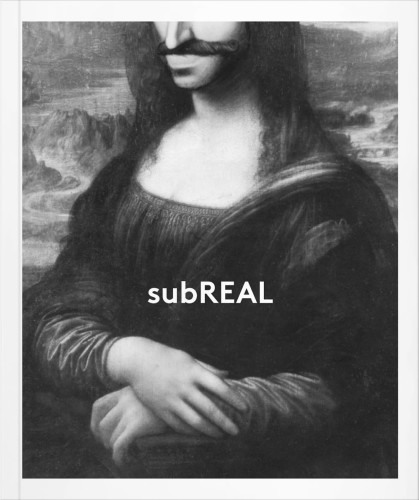
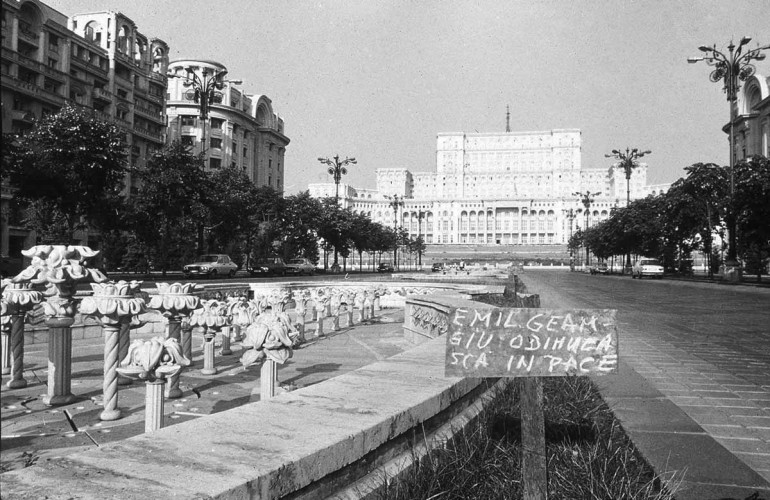
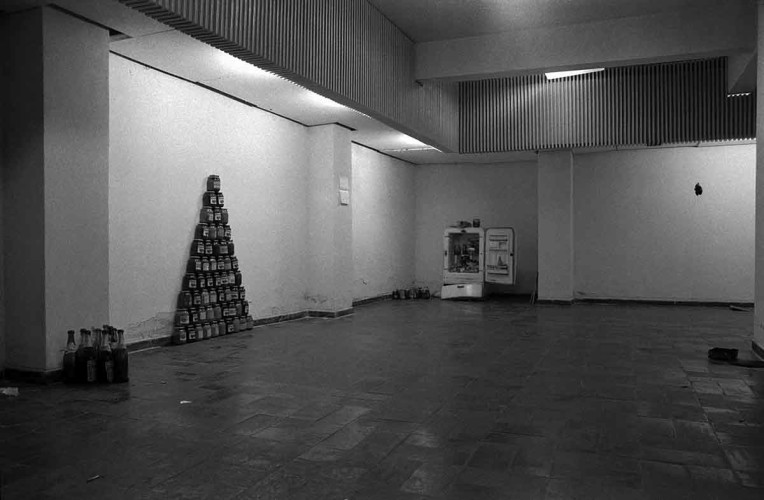
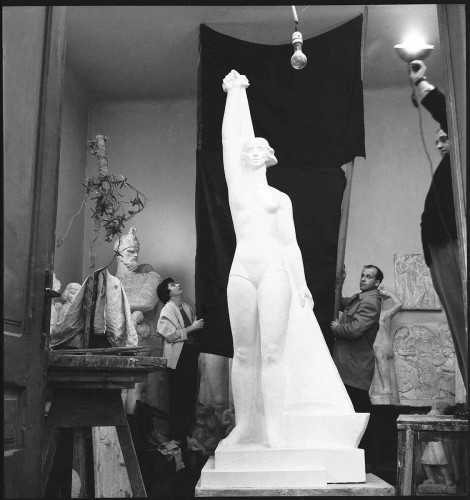
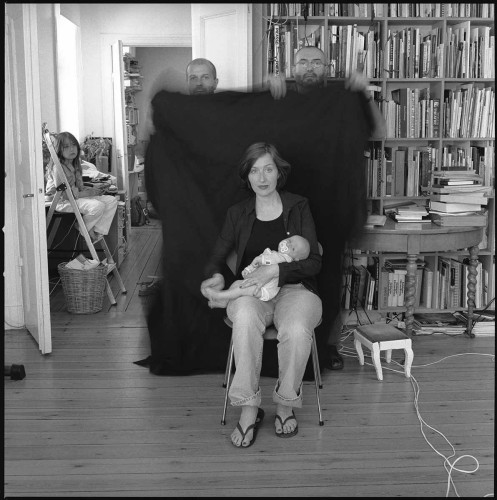
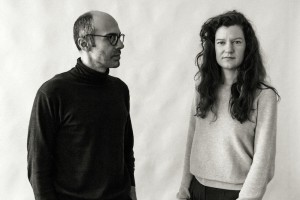
Comments are closed here.